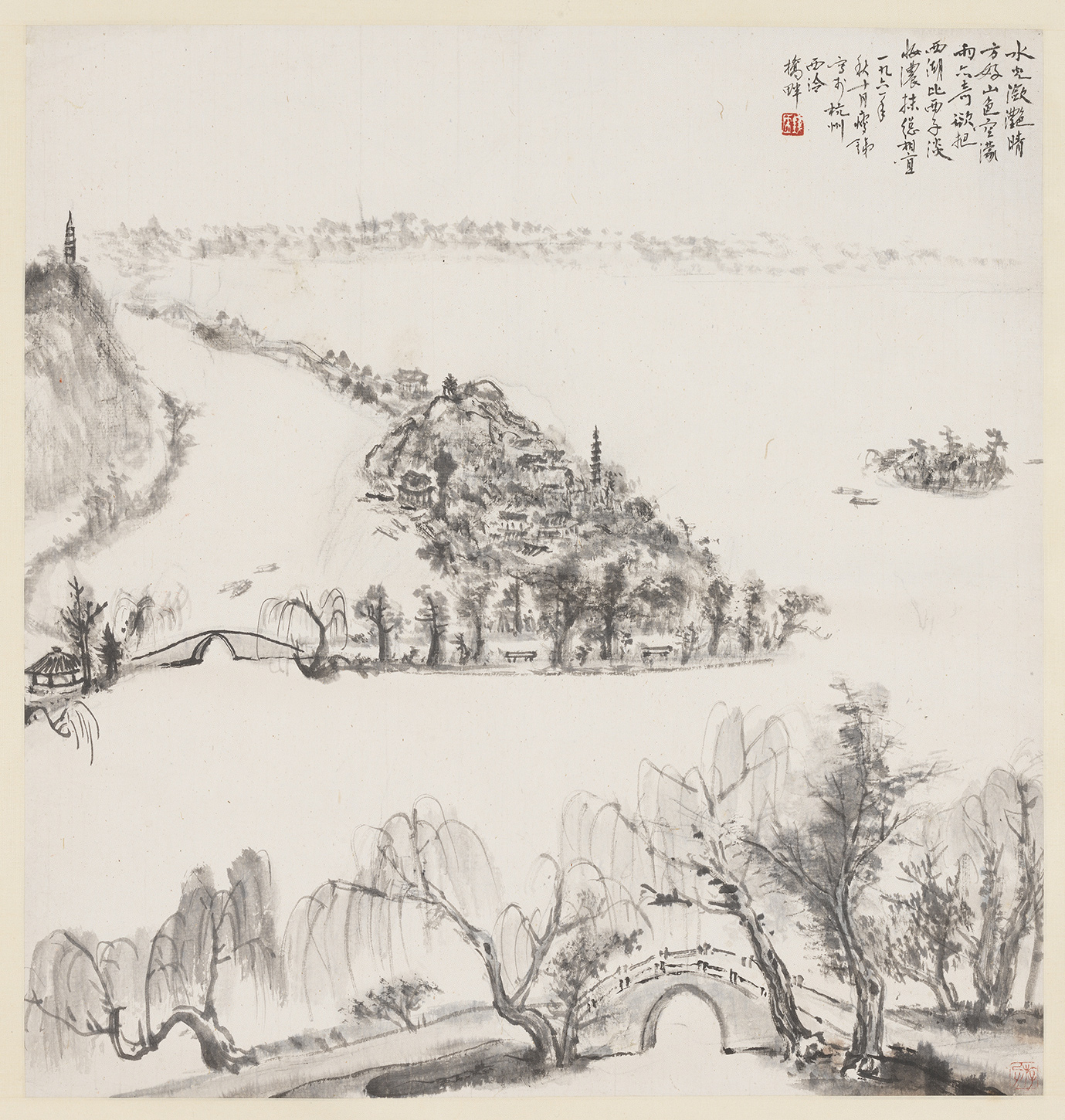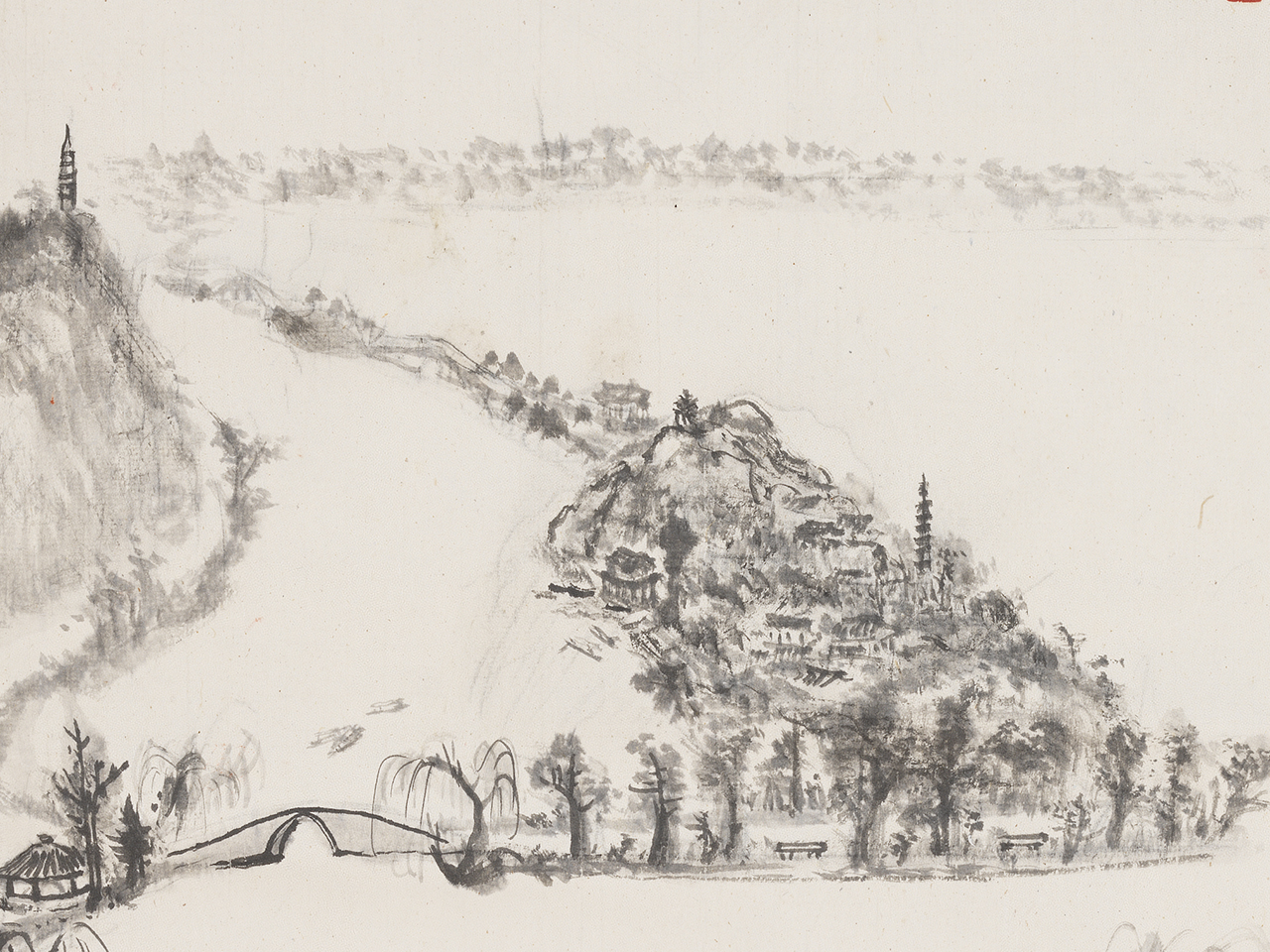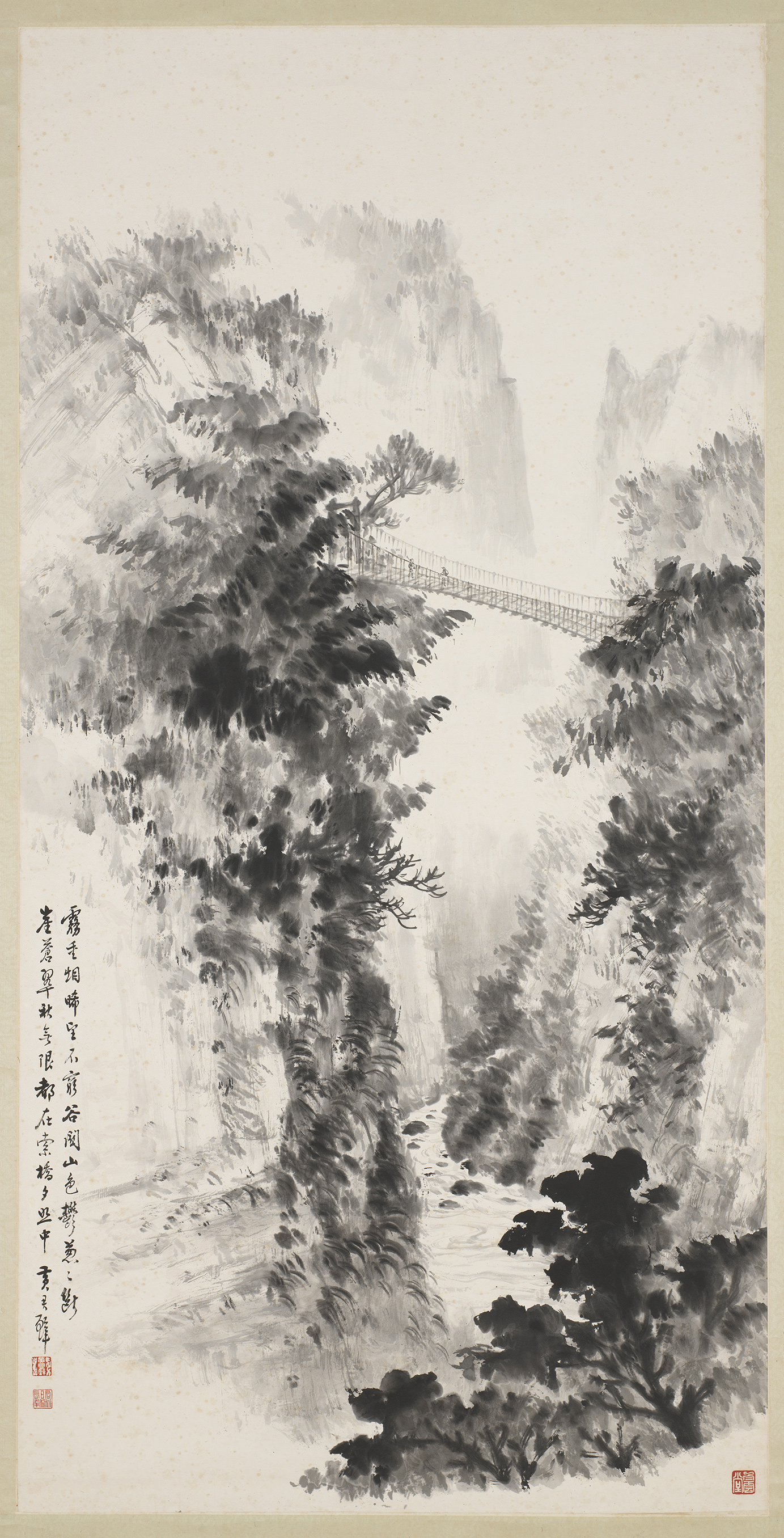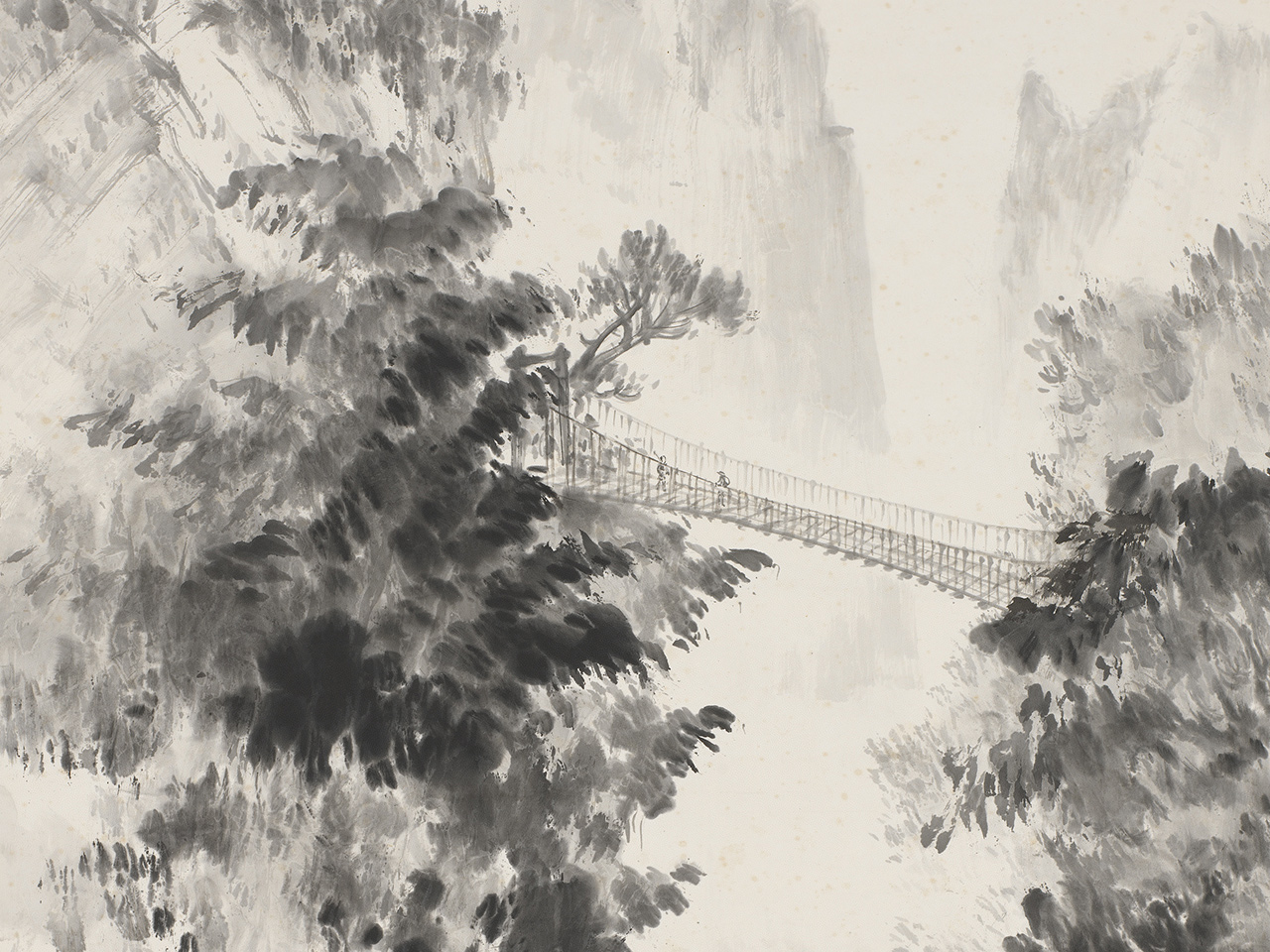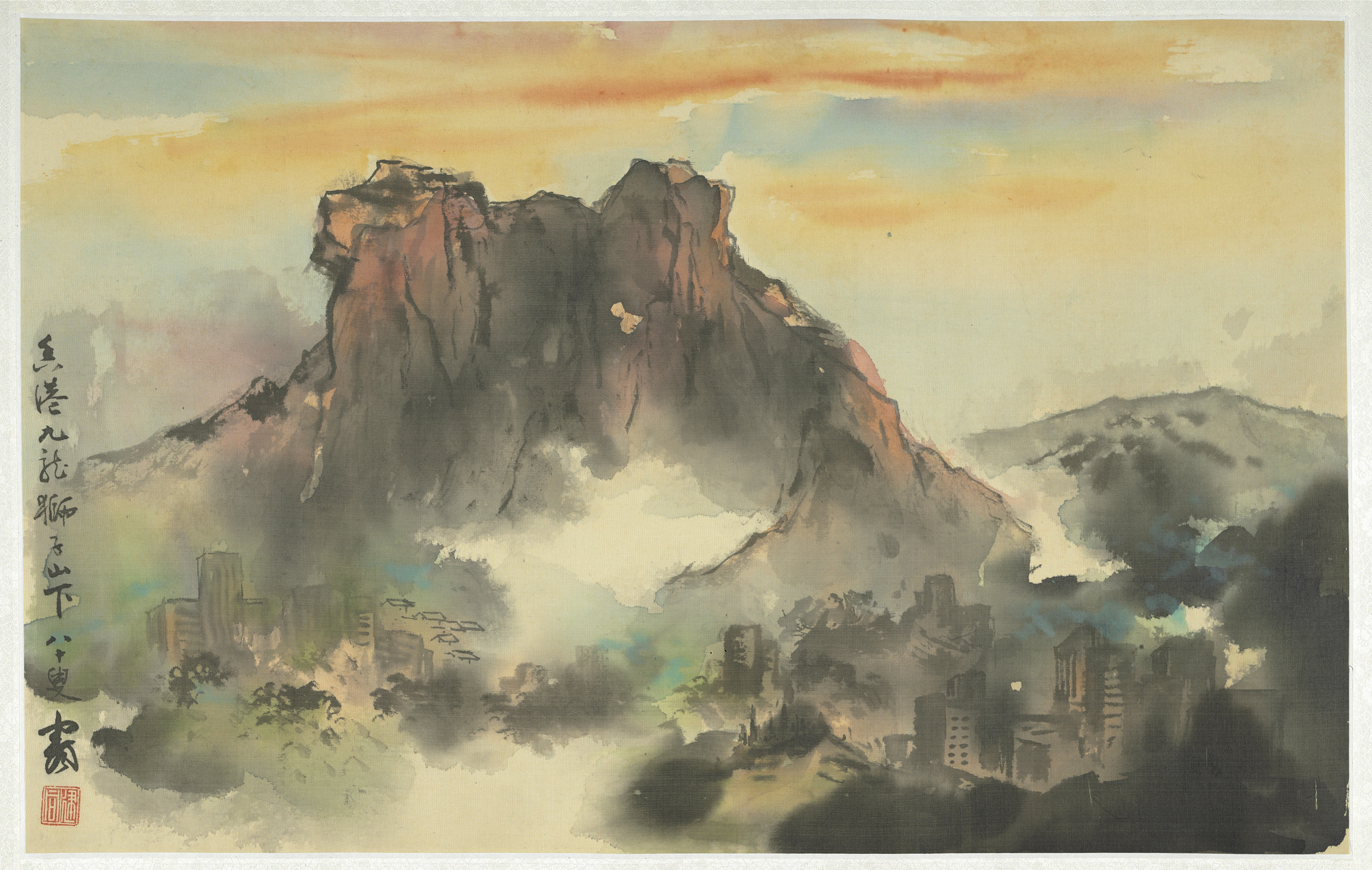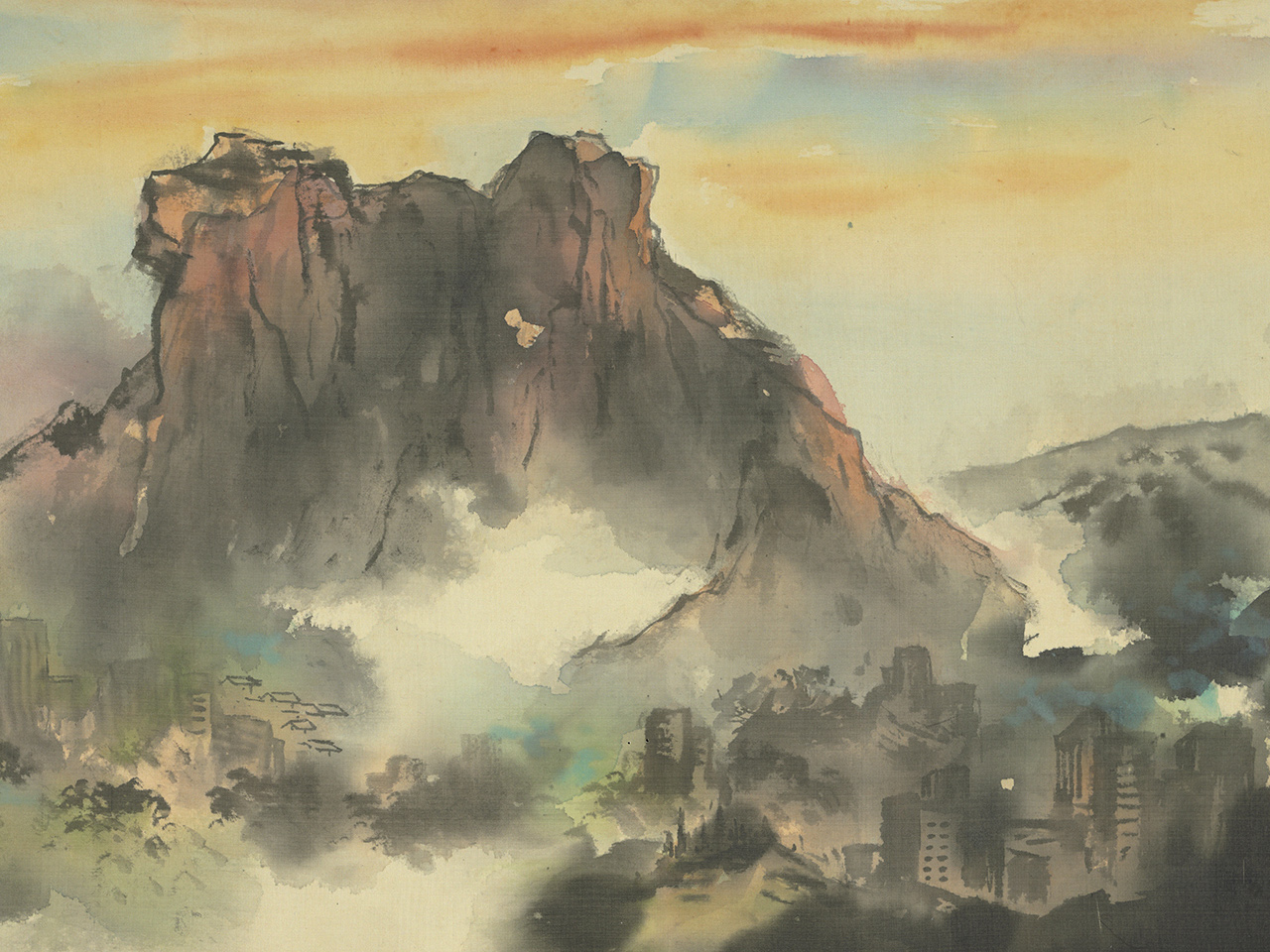The Politics of Scenic Painting
In 1949, China was politically divided into the mainland, Hong Kong, and Taiwan, presenting scenic landscape painting with various routes for development. After the establishment of the People's Republic of China and with calls for a "New Chinese-style Painting," its proponents advocated that the contents of Chinese painting should better reflect the current situation and be more realistic. In these new political conditions, scenic landscape painting often adopted a more patriotic approach in praise of the motherland and to serve the people. The artists who moved with the Nationalist government to Taiwan also traveled throughout the island in search of subject matter. Completion of the Central Cross-Island Highway, increasing tourism at Alishan, and access to the cliffs along the Suhua Highway on the east coast meant that the beauty of Taiwan's mountain and coastal scenery came increasingly within sight of landscape painters. As for Hong Kong, it had served as a buffer between the two sides of the Taiwan Strait before 1997 and had attracted numerous uprooted painters to depict their new home. The skyscrapers planted in and rising from verdant hills became an icon of Hong Kong the bustling financial center and a unique development for Chinese-style scenic painting.
-
Light Glittering on the Water
- Qian Ya (1897-1967), Republican period
- 55 x 52.5 cm
Qian Ya (style name Shuya, sobriquet Shoutie) was known by his sobriquet and a native of Wuxi in Jiangsu. He was a painter, calligrapher, and seal carver of renown in modern times.
This painting from 1961 depicts Kuahong Bridge in the foreground with Xiling Bridge, Gu ("Solitary") Mountain, Ruan Gong Islet, and Baochu Pagoda off to the left, which are all sites of the West Lake area in Hangzhou. The monochrome ink has been applied in dabs and washes, the composition featuring also the use of one-point perspective to create space that adds a feeling of expansiveness. Mainland China in the 1950s came under the influence of realism in art from the Soviet Union. With the call for a "New Chinese-style Painting," traditional ink painting likewise incorporated techniques of perspective to follow in the trends of the time.
-
Image of a Bridge at Guguan
- Huang Chun-pi (1898-1991)
- 138.2 x 69.5 cm
- Donated by Huang Chun-pi
Huang Chun-pi was a native of Nanhai in Guangdong. He came to Taiwan in 1949 and taught in the Department of Fine Arts at National Taiwan Normal University, becoming a renowned painter and calligrapher of the period.
Guguan is located in Heping District of Taichung City. After the Central Cross-Island Highway was built and opened to the public in 1960, the hot springs at Guguan along the route became famous among tourists. Huang Chun-pi submitted this work on Guguan as an entry in the 30th Taiwan Provincial Fine Arts Exhibition of 1976. It features layers of ink dots that depict the lush trees and vegetation in the area, perhaps also reflecting a variation on "Mi-dot texturing." Suspension bridges are rarely seen in ancient Chinese paintings, but they are a common scene in the hills and mountains of Taiwan, thus making it one of the features of this work.
-
Below Lion Rock
- Lin Jen-tung (Lin Jiantong) (1911-1994), Republican period
- 70 x 44 cm
- Donated by Lin Jikai and Lin Jisui
Lin Jen-tung (Lin Jiantong), a native of Xinhui in Guangdong, moved to and settled in Hong Kong in 1949. He became a famous painter and art educator there.
This painting done in 1990 depicts Lion Rock on Kowloon Peninsula in Hong Kong. The lion's "head" faces west and ascending its heights offers a panoramic view of Kowloon and Victoria Harbor. A collection of television series popular in Hong Kong since the 1970s entitled Below the Lion Rock tells stories about Hong Kong as a gathering place for people from all over China struggling to make a new life in the city. As a result, the expression "Lion Rock Spirit" is used to symbolize the local consciousness of Hong Kong people and has become a rallying point for people's movements that have emerged in the former British colony in recent years.
